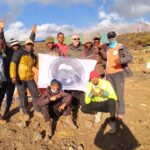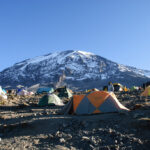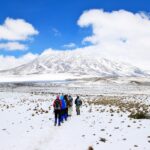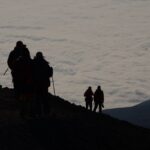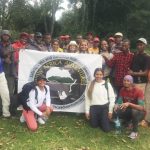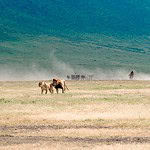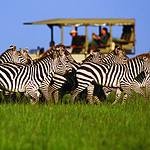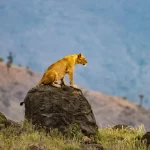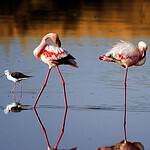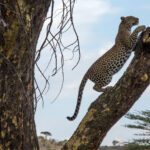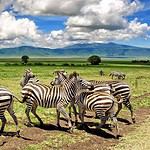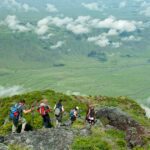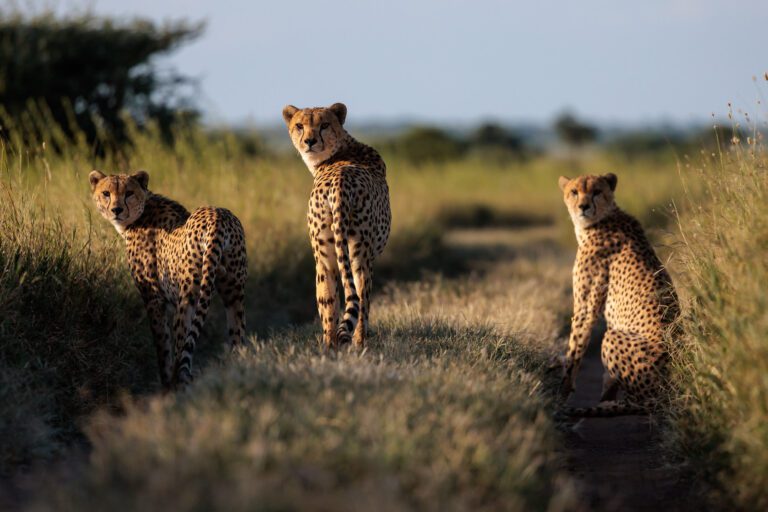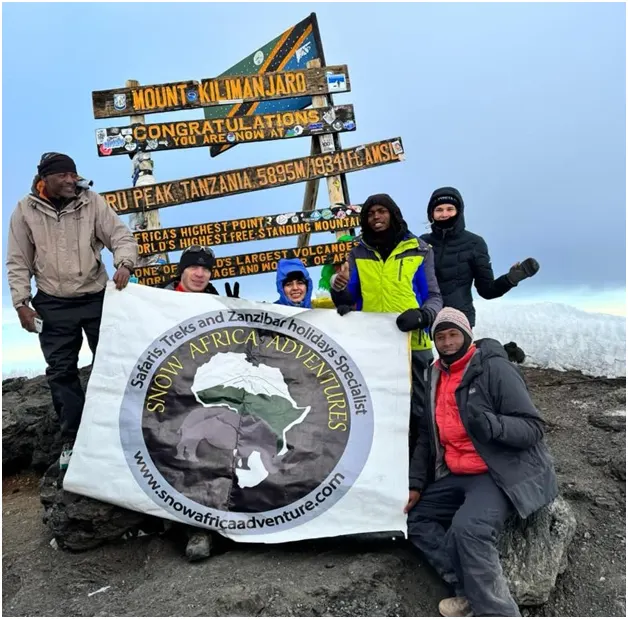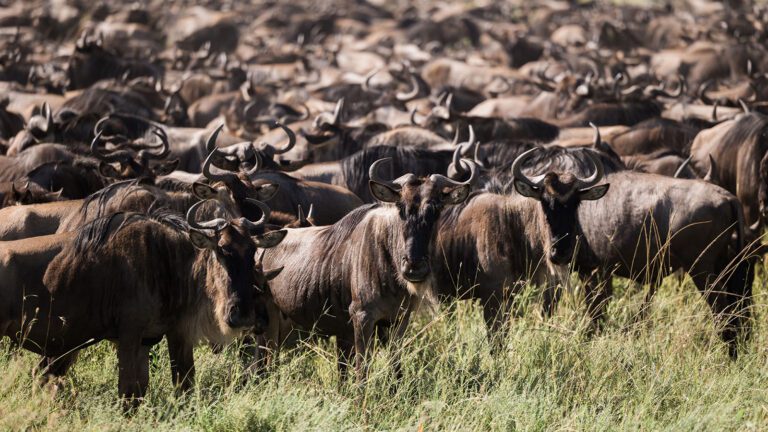Table of Contents
Walking Safaris in Ruaha: Up‑Close Wilderness Trekking
Nestled in southern Tanzania, Ruaha National Park offers a bold alternative to vehicle-based safaris: the Ruaha walking safari. These immersive experiences let you trek footpaths through rugged bush, tracking wildlife, learning from expert guides, and truly connecting with the African wilderness on an intimate level.
From tracking elephants by their footprints to identifying medicinal plants, a Ruaha walking safari brings adventure, learning, and conservation awareness together in ways vehicles simply can’t match.
1. What Is a Ruaha Walking Safari?
A Ruaha walking safari pairs small groups with armed, expert guides to walk established trails—sometimes several hours daily. Unlike game drives, this allows you to experience the serenity of Ruaha’s bush, spotting spoor, hearing birdcalls, and understanding animal behavior up close.
2. Why Choose a Ruaha Walking Safari?
Choose a Ruaha walking safari for:
- Intimate wildlife encounters: See dung beetles, track elephants, watch bushbucks.
- Conservation insights: Understand tracking methods and ecosystem roles firsthand.
- Physical engagement: Trekging through grasslands, baobabs, and riverine woodlands.
- Educational depth: Learn about plants, insects, geology, and survival skills.
The authentic nature of a Ruaha safari makes it unforgettable.
3. Best Trails & Routes in Ruaha
Top routes for a Ruaha safari include:
- Mwagusi River Walk – Elephant sand river tracks.
- Kisigila Plateau Trail – Scenic ridges & birding.
- Sable Hill Trek – Spectacular views over the park.
- Baobab Grove Walk – Ancient giants and iconic landscapes.
These trails vary daily, tailored to seasons and wildlife patterns to enrich the Ruaha safari experience.
4. Typical Walking Safari Itinerary
A typical Ruaha safari lasts 5–7 nights, blending walks with vehicle transfers. Day starts early, trekking through morning mist. Afternoons allow rest or optional game drives. Evenings bring campfire talks focused on wildlife stories and conservation.
5. Wildlife Encounters on Foot
During your Ruaha safari, expect to:
- Track elephants and learn their behaviors
- Observe zebra foals, giraffe browsing, impala herds
- Spot predators like lion or leopard from a safe distance
- Identify birds and reptiles along trails
- See insects, scorpions, and nocturnal creatures on night walks
Foot-based encounters on a Ruaha walking safari are intimate and unforgettable.
6. Safety & Expertise
Safety is key on a Ruaha walking safari. Guides carry rifles for protection and are trained in animal behavior and first aid. You walk single or double-file, follow strict trail protocols, and learn wilderness awareness as an integrated part of the journey.
7. Best Time to Go
Choose prime periods for your Ruaha walking safari:
- June–October: Dry season with optimal walking conditions
- November–March: Lush landscapes, bird watching, fewer guests
- Avoid peak rains (Jan–Mar), though shorter treks are possible with rain gear
Timing is crucial for a good Ruaha safari.
8. What to Pack
Key items for a Ruaha walking safari include:
- Lightweight trek attire in neutral colors
- Sturdy walking shoes or boots
- Hat, sunglasses, sunscreen
- Refillable water bottles or hydration pack
- Binoculars and wildlife ID book
- Day pack with snacks and rain shell
Pack minimally to enhance mobility during your Ruaha walking safari.
9. Accommodation Options
Combine a Ruaha safari with stays at:
- Mobile bush camps along trekking zones
- Rustic permanent camps near walking trails
- Family-friendly lodges with guided walk programs
- Seasonal fly-camps during dry seasons for remote access
Each option supports walkers and enriches the Ruaha walking safari experience.
10. Conservation and Community Impact
Your Ruaha walking safari contributes to:
- Anti-poaching funding
- Local employment (guides, camp staff)
- Community welfare projects and conservancy
- Wildlife monitoring via walking-trail data collection
Walking safaris are central to Ruaha conservation efforts.
11. Photography & Birding on Foot
Bring camera gear to photograph:
- Ground-dwelling species and macro wildlife
- Close-up birding—e.g., vultures, rollers, raptors
- Unique natural effects of light filtering through trees
A Ruaha safari provides dynamic photo possibilities not available from a vehicle.
12. Who Should Try It?
Ideal for:
- Adventurers craving physical engagement
- Wildlife enthusiasts wanting tracking and behavioral study
- Wildlife photographers focused on ground-level detail
- Eco-conscious travelers supporting sustainable tourism
If these resonate, a Ruaha walking safari is for you.
13. Sample 7-Day Itinerary
Day 1: Arrive, camp orientation, short explorer walk
Day 2: Full-day trek – elephant and birding focus
Day 3: Morning walk, afternoon drive to Kisigila
Day 4: Plateau walk with river views, sun downer evening
Day 5: Trek through baobabs, sun-set wildlife drive
Day 6: Night walk to observe nocturnal wildlife
Day 7: Final trek and farewell campfire stories
Each day builds on the Ruaha walking safari theme of intimate nature connection.
14. Booking Tips & Logistics
Book with reputable operators offering Ruaha walking safari:
- Small group sizes (max 6)
- Licensed, experienced guides
- Transparent pricing (includes permits and park fees)
- Flexible bookings during shoulder seasons
- Ethically mindful and safety-first operators
Research thoroughly for best Ruaha walking safari experience.
A Ruaha walking safari invites you into the heart of Tanzania’s wilderness—on foot. Away from vehicles and noise, you’ll feel the thrum of life in every step. From tracking elephants to mapping birds and learning from local guides, these walking safaris offer an unmatched connection to nature, culture, and conservation.
If you dream of walking beside wilderness, tracking wildlife, and sleeping under the stars in Africa’s vast wilds, start planning your Ruaha walking safari today. It will change how you see the world—one footstep at a time.

